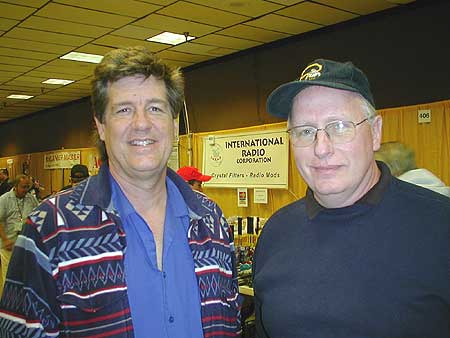

Compare and contrast this to the anarchy that occurs on the traditional 80M AM frequencies like 3873. As a result, and possibly also as a result of most ESSB op's occurring in the Extra sub-band, it is rare to get some ESSB-hater trying to jam signals. As early adopters of SDR radio technology, ESSB op's generally take great pride in presenting a very clean spectrum. The other main difference between ESSB and AM is that ESSB operators normally, but not always, tend to focus quite a bit on RF signal quality in addition to audio quality. These are becoming more prevalent for AM op's, too, but there is a high percentage of "heavy metal" vintage and homebrew gear use in AM, class E transmitters in particular. There are many similarities between AM and ESSB aficionados, namely the pursuit of excellent audio quality. However, if you do not have a radio that can listen with bandwidths in excess of 3KHz, then you are still missing out.Ī very inexpensive way to get into ESSB listening is to use one of the cheap USB dongle SDR receivers and something like cuSDR or the like.

There are also occasionally ESSB op's in the neighborhood of 14168. After 1700 local, listen around 3630, 36. In the afternoon, say before 1700 local, listen around 7168. Equipment modifications, if required, are pretty simple, or non-existent with SDRs.Īnother reason that you might not be seeing a lot of ESSB signals is because they tend to occur on the relatively uncrowded Extra-class sub-bands, particularly on 80 and 40M. However, other than the cost of the equipment, ESSB is not difficult to implement at all.

ESSB op's trend towards more modern equipment and you will find many of them operating Flex and Anan radios, or modified high-end Kenwoods and Yaesu's. Few radios offer easy access to ESSB bandwidths and the ones that do tend to be expensive. Hardware capabilities are also a consideration. However I've found that if you run about 3KHz, with really good, clean audio with some nice multi-band compression, it can get you "noticed" in pile-up's more quickly. And it when working DX, award chasing, contesting, etc., even if infinite bandwidth were available, it is more efficient use of your available power thereby obtaining a better signal at your intended target (the power/bandwidth ratio in dBm/Hz is larger). It's certainly been embraced, but not for more traditional op's, mostly because of bandwidth issues as you suspect. 3.5, 4.5 and 6KHz are the most common bandwidths, but they can vary quite a bit. There really aren't any standards per se. It has and is taking off! IMHO ESSB is becoming more commonplace than AM.Įchomancer pointed you at a very good article, although its discussion of ESSB "standards" is somewhat misleading.
#Essb audio group software#
I am currently using software version 1.2 Alpha 5 and the problem continues.Disclaimer: I've become an inveterate ESSB'er, so I'm naturally enthusiastic about it. The control computer is an Intel NUC, i5 processor and 16 gig of RAM. There is no visual indication on the Expert SDR2 software screen to tell me that it has happened and a jump has never occurred while in the receive mode. I will happen from 2 to 5 times during an on-the-air session. When the VOX drops out, between words, the frequency returns to normal and remains normal for a period of time up to many minutes when it may occur again. While I am talking a single VOX cycle will be approximately 500 Hz. It occurs in a daily roundtable that lasts from 1 - 2 hours every morning and every evening. The conditions are that I am on 80M LSB, 3710 kHz., no RIT, no XIT, the "Lock" button enabled and VOX is on. I have not found any way to reproduce it manually. that last for a single transmit VOX cycle. The problem is a short frequency jump of about 500 Hz. I have a problem that was first reported by my friends soon after I loaded my first 1.2 Alpha.


 0 kommentar(er)
0 kommentar(er)
